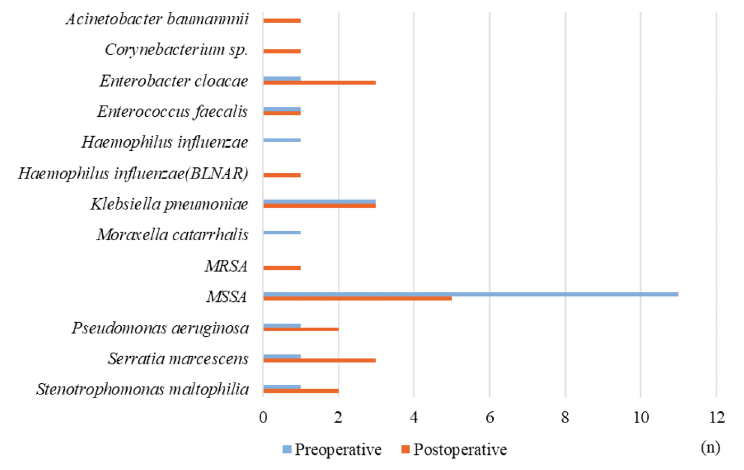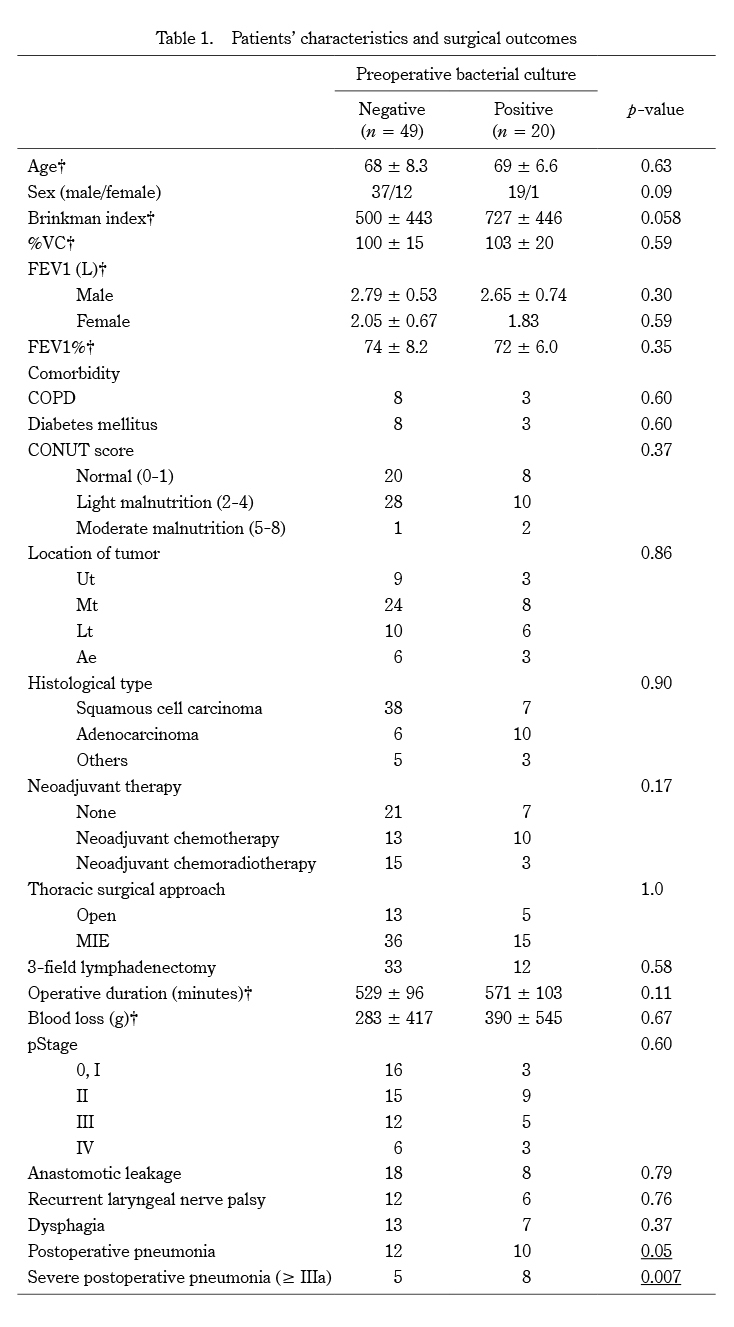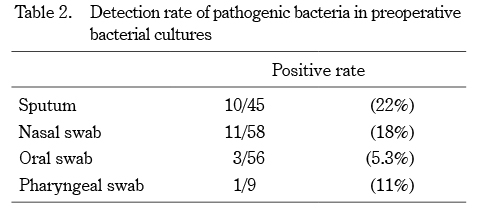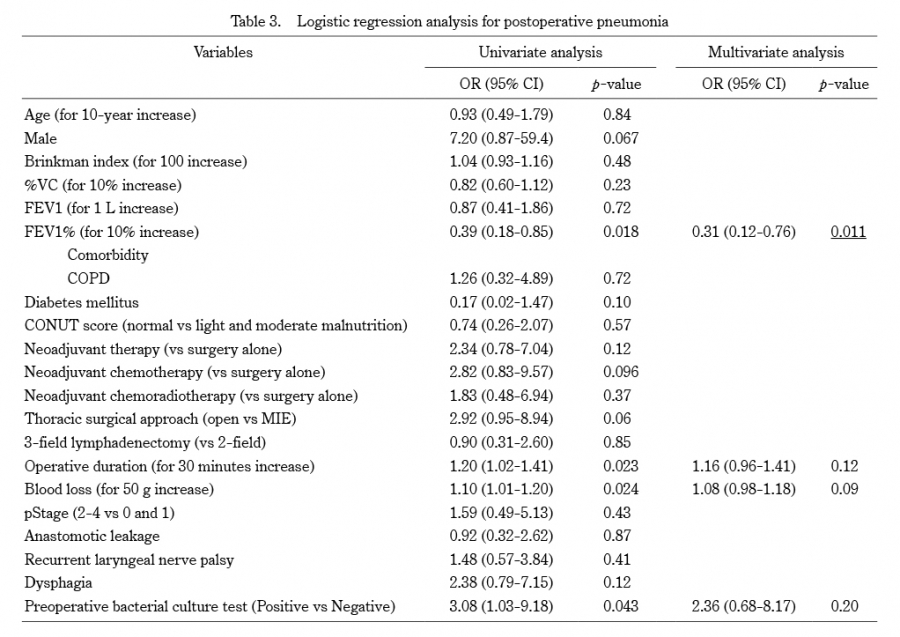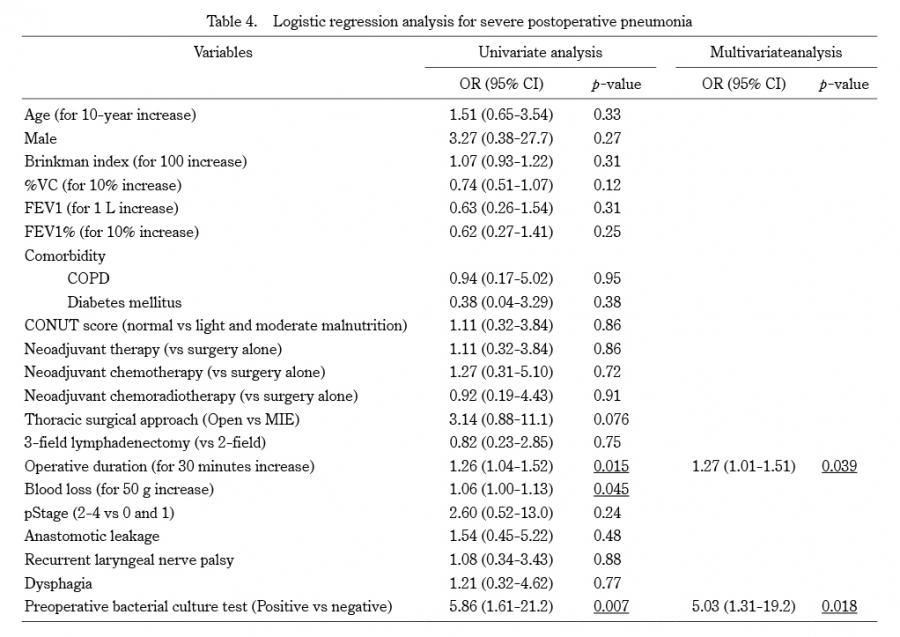1. Takeuchi H, Miyata H, Gotoh M, Kitagawa Y, Baba H, Kimura W, et al. A risk model for esophagectomy using data of 5354 patients included in a Japanese nationwide web-based database. Ann Surg, 260:259-266, 2014.
2. Dhungel B, Diggs BS, Hunter JG, Sheppard BC, Vetto JT, Dolan JP. Patient and peri-operative predictors of morbidity and mortality after esophagectomy:American College of Surgeons National Surgical Quality Improvement Program (ACS-NSQIP), 2005-2008. J Gastrointest Surg, 14:1492-1501, 2010.
3. Mamidanna R, Bottle A, Aylin P, Faiz O, Hanna GB. Short-term outcomes following open versus minimally invasive esophagectomy for cancer in England:a population-based national study. Ann Surg, 255:197-203, 2012.
4. Baba Y, Yoshida N, Shigaki H, Iwatsuki M, Miyamoto Y, Sakamoto Y, et al. Prognostic Impact of Postoperative Complications in 502 Patients With Surgically Resected Esophageal Squamous Cell Carcinoma:A Retrospective Single-institution Study. Ann Surg, 264:305-311, 2016.
5. Uchihara T, Yoshida N, Baba Y, Yagi T, Toihata T, Oda E, et al. Risk factors for pulmonary morbidities after minimally invasive esophagectomy for esophageal cancer. Surg Endosc, 32:2852-2858, 2018.
6. Weijs TJ, Ruurda JP, Nieuwenhuijzen GA, van Hillegersberg R, Luyer MD. Strategies to reduce pulmonary complications after esophagectomy. World J Gastroenterol, 19:6509-6514, 2013.
7. Yamashita K, Makino T, Miyata H, Miyazaki Y, Takahashi T, Kurokawa Y, et al. Postoperative Infectious Complications are Associated with Adverse Oncologic Outcomes in Esophageal Cancer Patients Undergoing Preoperative Chemotherapy. Ann Surg Oncol, 23:2106-2114, 2016.
8. Matsunaga T, Miyata H, Sugimura K, Asukai K, Yanagimoto Y, Takahashi Y, et al. Clinical usefulness of a perioperative bacteriological culture to treat patients with postoperative pneumonia after esophagectomy. Ann Gastroenterol Surg, 3:57-64, 2019.
9. Kikutani T, Tamura F, Tashiro H, Yoshida M, Konishi K, Hamada R. Relationship between oral bacteria count and pneumonia onset in elderly nursing home residents. Geriatrics & Gerontology International, 15:417-421, 2015.
10. Yoshida N, Morito A, Nagai Y, Baba Y, Miyamoto Y, Iwagami S, et al. Clinical Importance of Sputum in the Respiratory Tract as a Predictive Marker of Postoperative Morbidity After Esophagectomy for Esophageal Cancer. Ann Surg Oncol, 26:2580-2586, 2019.
11. Akutsu Y, Matsubara H, Shuto K, Shiratori T, Uesato M, Miyazawa Y, et al. Pre-operative dental brushing can reduce the risk of postoperative pneumonia in esophageal cancer patients. Surgery, 147:497-502, 2010.
12. Ignacio de Ulíbarri J, González-Madroño A, de Villar NG, González P, González B, Mancha A, et al. CONUT:a tool for controlling nutritional status. First validation in a hospital population. Nutr Hosp, 20:38-45, 2005.
13. Yamada Y, Yurikusa T, Furukawa K, Tsubosa Y, Niihara M, Mori K, et al. The Effect of Improving Oral Hygiene through Professional Oral Care to Reduce the Incidence of Pneumonia Post-esophagectomy in Esophageal Cancer. Keio J Med, 68:17-25, 2019.
14. Jimbo K, Mori K, Aikou S, Okazaki M, Sato T, Moriya K, et al. Detection and identification of pathogenic bacteria responsible for postoperative pneumonia after esophagectomy. Esophagus, 14:153-158, 2017.
15. Dindo D, Demartines N, Clavien PA. Classification of surgical complications:a new proposal with evaluation in a cohort of 6336 patients and results of a survey. Ann Surg, 240:205-213, 2004.
16. Kosumi K, Baba Y, Yamashita K, Ishimoto T, Nakamura K, Ohuchi M, et al. Monitoring sputum culture in resected esophageal cancer patients with preoperative treatment. Dis Esophagus, 30:1-9, 2017.
17. Matsui K, Kawakubo H, Matsuda S, Mayanagi S, Irino T, Fukuda K, et al. Clinical usefulness of sputum culture on the first postoperative day to predict early postoperative pneumonia after esophagectomy for esophageal cancer. Esophagus, 18:773-782, 2021.
18. Yuda M, Yamashita K, Okamura A, Hayami M, Fukudome I, Toihata T, et al. Influence of Preoperative Oropharyngeal Microflora on the Occurrence of Postoperative Pneumonia and Survival in Patients Undergoing Esophagectomy for Esophageal Cancer. Ann Surg, 272:1035-1043, 2020.
19. Tsubosa Y, Sato H, Bando E, Ota Y, Tanuma A, Ohmagari N. Relationship between the pathogens of postoperative pneumonia after an esophagectomy for thoracic esophageal cancer and the aggregate length of preoperative hospital stay. Esophagus, 7:81-86, 2010.
20. Sok M, Dragaš AZ, Eržen J, Jerman J. Sources of pathogens causing pleuropulmonary infections after lung cancer resection. Eur J Cardiothorac Surg, 22:23-29, 2002.

